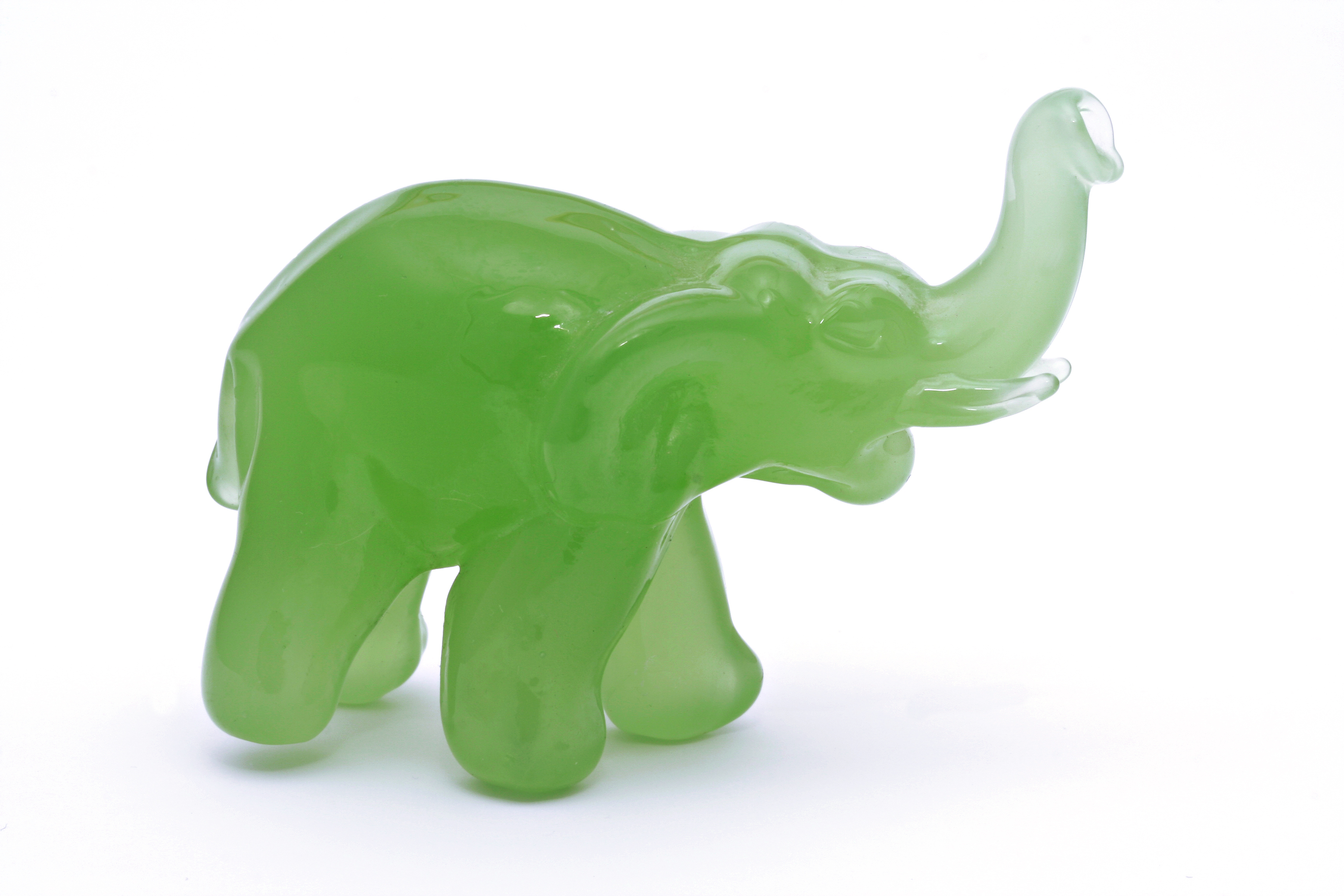Jade is a hard, tough, and highly colored stone widely used for fine carvings and jewelry. In ancient China, it took the place of gold and other precious stones. The Chinese carved it into jewelry, and also buried it with their dead. Many beautiful jade carvings, dating from 1400 B.C., have been dug from the ruins of Anyang, the capital of the first Chinese dynasty. Through the years, the Chinese developed new sources of the mineral and improved their carving technique. Jade carving reached its height during the Ming Period (1368-1644). The carvings of this period are treasured by collectors.

Two minerals, jadeite and nephrite, have been classified as jade. Their chief colors are white and green.
Nephrite,
the chief source of jade, was the mineral which the early Chinese used for carving. At that time, it came from Turkestan. Today, it comes chiefly from New Zealand. Nephrite deposits also have been found in Wyoming and Alaska. The principal jade-cutting centers are at Beijing, Shanghai, and Guangzhou. The mineral is translucent to opaque and comes in a wide range of colors, including dark green, white, yellow, gray, red, and black. The most valuable type of nephrite is a dark green jade called spinach jade.
Jadeite,
or Chinese jade, is a rare jade mineral, found mainly in Myanmar, Japan, California, and in carved objects in Mexico. It is more valuable than nephrite because of its beautiful colors, such as light green or lilac. Translucent green jadeite is sometimes called imperial jade. The best quality of this jade is very valuable.
Jade has a peculiar structure of interlocking meshes of fine, needle-shaped crystals. This structure makes jade strong enough to be carved into delicate patterns and thin implements. Nephrite and jadeite tools were found in the remains of the lake-dwelling peoples of the Neolithic Period (New Stone Age) in Europe, from about 4300 B.C. to 800 B.C. The Olmec, Maya, and other Indians of Central America made jadeite tools beginning about 1200 B.C.
